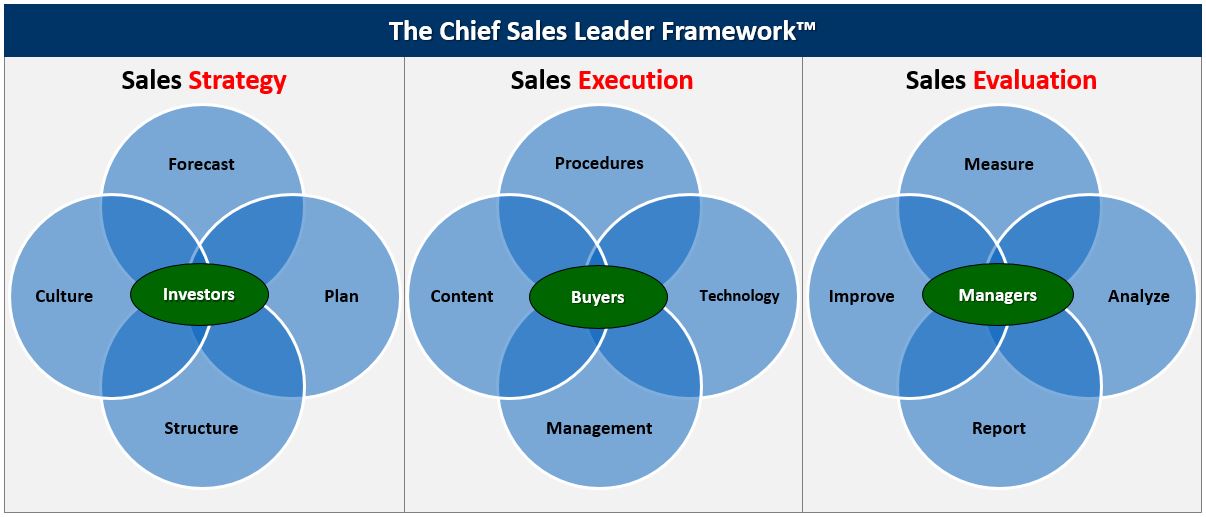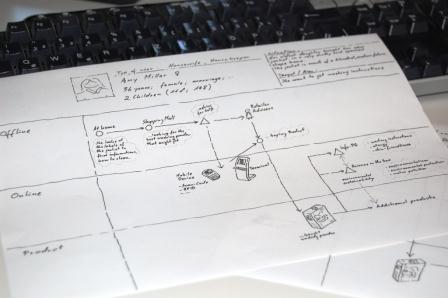Merge Sales Teams
Enable your sales team and managers to execute with precision – – effectively, efficiently & predictably

Common Causes of Failure When You Merge Sales Teams
#1 Management Is Distracted by meetings on merger integration teams which create distractions for salespeople who are concerned about losing their jobs
#2 Management Lacks Experience Merging one or more of the required sales processes i.e. sales call approach, sales management practices, sales strategy and forecasting, sales organization design
#3 Unrealistic Expectations have been set for sales managers from both companies i.e. make sales calls, manage salespeople, learn new products and pricing, focus cross-selling efforts
#4 Time Pressure to shorten sales cycle time and generate immediate cross-selling revenue results to cover the cost of the M&A

We Use The Chief Sales Leader Framework™
To avoid wasting time, money & morale when merging the three (3) strategic and twelve (12) operating sales processes that enable a sales team to execute with precision – – effectively, efficiently, & predictably
Steps To Merge Sales Teams
How To Merge Sales Teams
Step 1 – We Start At The Sales Call and Work Backwards Because:
- That is where the buyer resides and we can learn about our combined messaging for cross-selling both companies products and services
- The cash register rings – – to generate short-term revenue from cross-selling
- Time-saving lessons are learned for merging the (3) strategic and twelve (12) sales operating processes that are required for a sales team to execute with precision – – effectively, efficiently and predictably


Step 2 – Understand The Buyer Decision Process
- What answers do buyers need in order to make a purchase?
- What questions do buyers not know to ask about your offering?
- What is the right sequence of questions and answers to engage?
- What are you asking them to start and stop doing?
- What are the ten reasons why they will so “no” to purchase?
Step 3 – Update Value Prop & Sales Call Guide
- Open the sales conversation
- Investigate buyer needs and qualify them
- Demonstration your solution
- Present pricing options
- Negotiate and close the deal
- Handle objections at any point during the conversation


Step 4 – Train Sales People In Both Companies To Cross-sell Using The New Approach
- Design training materials
- Craft training scripts
- Conduct training webinars and workshops
- Measure training performance
Step 5 – Conduct Assessment of Both Sales Teams To Pinpoint Problems and Prioritize Improvements
We recommend using The Chief Sales Leader Framework™ because it provides a comprehensive framework that covers the three (3) strategic and twelve (12) operating processes that are required for a sales team to execute with precision – – effectively, efficiently and predictably.
Part 1 – Sales Strategy
- Sales forecasting for revenue, sales pipeline activities, sales productivity, staffing requirements and selling expenses
- Sales and market planning by industry, geography, buy-point, product, and service, buy point, etc.
- Sales organization design to get the right salespeople to the right place at the right time
- Sales culture to ensure that sales call execution is being reinforced
Part 2 – Sales Execution
- Sales procedures for lead generation, appointment setting, new customer acquisition, customer onboarding, customer service, account management renewals, cross-selling, and win-backs
- Sales technology including CRM, marketing automation, customer service, phone, auto-dialer, sales library, productivity, project management, territory mapping and routing, and human resources
- Sales content for awareness building, purchase evaluation, company information, product and service information, pricing and proposals, promotional materials, contacts and customer service help desk
- Sales people for hiring, onboarding, coaching, compensating, rewarding, evaluating, training, developing future sales leaders, and succession planning
Part 3 – Sales Evaluation
- Sales measurement for tracking sales activities, sales opportunities, and contact history
- Sales analysis for internal activities, results, and trends; as well as external events and trends
- Sales reporting for industries, buyer companies, sales activities, revenue, sales regions, and salespeople
- Sales process improvement for gap analysis, problem identification and prioritization, improvement planning, and improvement reporting

Step 6 – Create Current State Process Maps For Both Companies, including:
- Procedures – – indicating known problem areas
- Policies
- Measures
- Employee Training Manuals i.e. Wikis, Sales Playbooks
- Reporting
Step 7 – Create Future State Process Map To Be Used By Both Sales Teams, including:
- Procedures
- Policies
- Measures
- Employee Training Manuals i.e. Wikis, Sales Playbooks
- Reporting


Step 8 – Train Sales People In Both Companies In New Sales Processes
- Design training materials
- Craft training scripts
- Conduct training webinars and workshops
- Measure training performance

